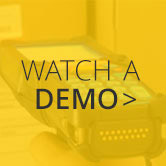Customer satisfaction is your top priority. You want to ensure that orders get fulfilled and delivered on time. If you are already using SAP Business One, you are already one step closer to a smoother sales order process flow. Now, it is time to learn how to streamline the sales process through SAP Business One.
Here is everything you need to know about the sales process and its primary functions.
What is the Sales Process in SAP Business One?
The SAP Business One sales process refers to the selling of goods or services provided by your business, invoicing, and delivering those goods or services to the customer. The final step of the sales process is when you receive the payment for those goods or services. In SAP Business One, you can enhance the sales order process flow by inputting data into the correct documents.
There are four main parts of the sales order process:
- Sales Order
- Delivery
- A/R Invoice
- Incoming Payment
The sales order refers to the lead that agrees to buy a set quantity of items at a specific price. These items are already entered into SAP Business One, so the information is already available and entered into the sales order either automatically or manually.
The second step in the process is delivery, which means that the goods have been packaged, shipped, and delivered to the customer.
The A/R invoice is the only part of the SAP Business One sales process that needs to be generated. The invoice has both records of the revenue as part of a profit-and-loss statement and the payment request. Invoices can also be posted at the same time a payment is processed.
Finally, payment from the customer is processed automatically within the system. If you want to check on your finances or incoming payments, that is accessed from the Banking module in SAP Business One.
Entering Key Data
When generating a sales order, there are two key pieces of information that must be entered:
- Business Partners, which is broken into Leads and Customers
- Items, which represents which products or services are being sold
You will see the fields where you have to enter these pieces of data. Previously recorded Business Partners and Items are listed in a drop-down menu.
In order to move onto the Delivery part of the sales order process flow, you must have a customer. Leads can be turned into Customers, but you cannot send a product or service to a Lead. All the data provided by Leads and Customers are stored within the database. The master data for all your customers will describe the person or organization, as well as records of previous orders, payment information, and more, so you can automatically add information to documents later on.
Item descriptions and information come next. Like the master data on your customers, the SAP Business One Inventory Management module contains all the data on products and services you provide, such as Unit Price, Tax Code, Quantity, Discount, and more.
Did you know that you can also make specific serial and batch numbers for customers? When selecting Items, go to the Quantity field and right-click on it. This will produce an option for editing Batch/Serial Numbers.
You can also make a pick-list directly from the order screen by choosing Generate Pick List.
Checking Item Availability
Since a sales order is the commitment to provide certain services or products for a customer by a specific date, you want to make sure that you can uphold that promise. But how do you do that? Within SAP Business One, there is an option for an Item Availability Check. This feature can be activated by going into the Administration tab. Head to System Initialization, Document Settings, then to Per Document Tab, where you will find Sales Orders. There is a box you can check to activate an automatic availability check on all items with data in the system.
The availability of items will be listed as you add goods or services to the sales order. Depending on the item availability, the following windows may pop up:
- Continue – ignore any alerts and proceed with the order, regardless of the number of items available
- Change to Earliest Available – the delivery date changes depending on the earliest availability of an item ordered
- Change the Available Quantity – prioritize what is currently available, regardless of the date
- Display Alternative items
- Display Quantities in Other Warehouses
- Display Available to Promise Report – generates a report that shows the quantities by date and how you can change the delivery dates for each item
- Delete Row
Creating and Posting Deliveries
A delivery does not only designate the items that have been delivered. Once the goods have been shipped and a packing slip is generated, you can post the information in the Delivery section of the Sales Order. The easiest way to go about this is to access the drop-down menu from “Copy To” and select “Delivery”. Once a delivery has been created, SAP Business One accounts for the number of items in the shipment and calculates the new amounts of your products.
A goods issue is also posted to the warehouse. Any return requests and actual returns can affect the amount of inventory posted.
Sales Process: The A/R Invoice
While you can produce a document at any time during the sales process in SAP Business, the A/R invoice is mandatory. This is an essential document for small businesses as well as enterprises using SAP Business One. Why? The A/R invoice contains all the information you will need, including the customer’s details, their order, shipment and delivery dates, and a record of the amount owed.
When you generate an A/R invoice, two postings are created:
- A customer account debit showing what they owe
- A credit for the revenue you will gain
This is the most basic outcome of a transaction. However, you can do a lot more within the Invoice section, such as setting up a payment, creating credit memos, reserve invoices (when you bill the client before a shipment), down payments, and more.
The Sales Process Simplified
SAP Business One is the best way to increase the efficiency and productivity of your business or warehouse. With tools that enhance the sales order process flow, you can process orders and have them delivered faster than ever. In return, your customers will be much more satisfied and continue to use your services or products.
Wisys can help you implement SAP Business One and eliminate the challenges holding your business back. If you are looking for a reliable partner, contact our team today at 770-955-3530 to learn more about our services.


